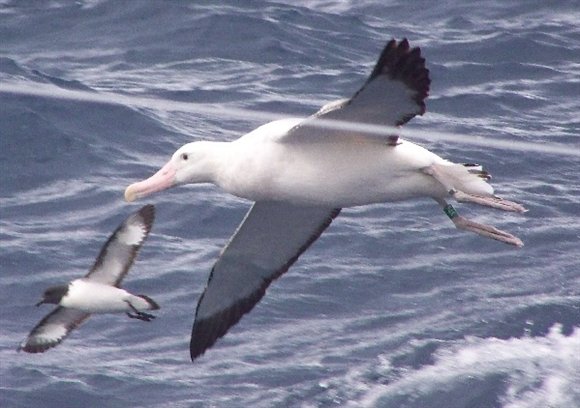Henri Weimerskirch (CNRS-CEBC, Villiers-en-Bois, France) and colleagues have published in the journal Conservation Biology on using Wandering Albatrosses Diomedea exulans to detect the radar emissions from and thus the whereabouts of fishing vessels in the Southern Ocean.
“Despite international waters covering over 60% of the world's oceans, our understanding of how fisheries in these regions shape ecosystem processes is surprisingly poor. Seabirds are known to forage at fishing vessels, with potential deleterious effects for their population, but the extent of overlap and behavior in relation to ships are poorly known. Using novel biologging devices, which can detect radar emissions to record the position of boats and seabirds, we measured the true extent of the overlap between seabirds and fishing vessels, and generated estimates of the intensity of fishing and distribution of vessels in international waters. During breeding, wandering albatrosses from the Crozet islands patrolled an area of more than 10 million square kilometers and as much as 79.5% of birds equipped with loggers detected vessels, at distances up to 2500 km from the colony, modifying their natural foraging behavior to attend boats. The extent of this overlap has widespread implications for bycatch risk in seabirds and reveals the areas of intense fishing throughout the ocean. We suggest that seabirds equipped with radar detectors are excellent monitors of the presence of vessels in the southern ocean, offering a new way to monitor fisheries. The method used opens new perspectives to monitor the presence of illegal fisheries and to better understand the impact of fisheries on seabirds.”

A Wandering Albatross at sea (with a Pintado Petrel), photograph by Sebastian Jimenez
Read more here.
Reference:
Weimerskirch, H., Filippi, D.P., Collet, J., Waugh, S.M. & Patrick, S.C. 2017. Use of radar detectors to track attendance of albatrosses at fishing vessels. Conservation Biology doi.org/10.1111/cobi.12965.
John Cooper, ACAP Information Officer, 23 June 2017

 English
English  Français
Français  Español
Español